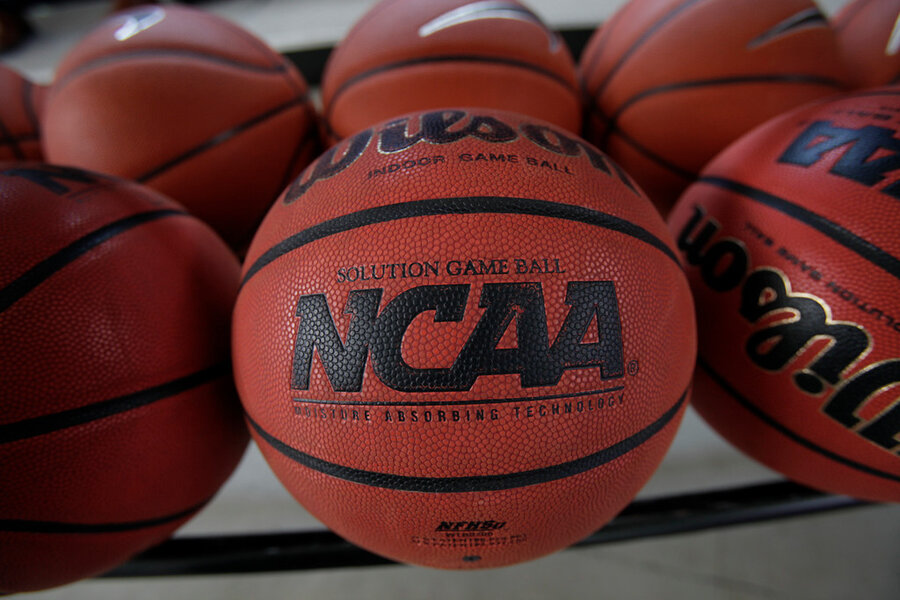Take the taint out of March Madness
March Madness, the college basketball tournament, dazzles fans with tradition and pageantry, unexpected heroes and goats, and memorable moments. This stunning exhibition of athleticism and competitive desire will dominate American sports from now until the April 2 championship game.
But beneath the glamour of big-time college basketball lies a sport clad in the tatters of disgrace, one that makes a mockery of the amateur student-athlete ideal.
For some time the Federal Bureau of Investigation has been looking into illegal payments made to college basketball players and their families. So far 10 individuals, including four active college assistant coaches, have been arrested. But this likely represents only a tiny fraction of the extent of the problem. By one estimate at least 50 college basketball programs eventually may be found to be compromised.
What motivates the rule-breaking? The billions of dollars of profits at stake for major universities, athletic gear companies, and TV networks.
Despite the huge amount of money involved, very little of it goes to the players themselves, whose skills are at the core of the whole enterprise. To players interested in receiving a college education, an athletic scholarship does offer a sizable financial enticement. But many top high school players are either not qualified for or uninterested in college academics. For them, playing college basketball provides only one incentive: a way to showcase their skills to professional scouts with the hope of someday playing in the National Basketball Association or in a professional league overseas. (Only a tiny fraction of high school players eventually are drafted by an NBA team, according NCAA statistics: 0.03 percent, or three out of every 10,000.)
The NBA requires that players be at least 19 years old and one year out of high school to enter the league. That forces top teen players to play college ball for a year after high school, creating what’s known as the “one and done” phenomenon: players staying a single year (and attending classes during their first semester just to remain eligible to play).
College programs compete intensively for these prized players, which has inevitably led some to go beyond what is legal in offering “under the table” incentives.
The economics at play are simple: Top players have considerable financial value beyond what they are being paid (even with scholarships). One set of solutions would be to offer college players legal ways to profit from their athletic skills. They could be given stipends for living expenses beyond their academic scholarships, literally amounting to modest paychecks. They could be allowed to endorse products, such as athletic shoes, for pay. One coach argues they ought to be able to take out loans against their future professional earnings.
But all these schemes eat away at the concept of amateurism in college athletics.
The best solution could come from the NBA. It could lower the age limit to 18, allowing the very best high school players to be drafted directly into the league. It could also beef up its G League, a developmental league for prospective NBA players. Teens looking for a career in pro basketball could be drafted straight into the G League to develop and showcase their skills.
Right now, the NBA has little incentive to improve its obscure G League because colleges provide what amounts to a free minor league that develops players. G League salaries are as low as $20,000 per season (the NBA’s minimum salary is $562,493 per season), and the games are much less visible on TV than top college contests. Today’s top prospects would much rather spend a year in college than head into a year of G League basketball obscurity.
Better G League TV contracts and playing in bigger arenas in front of bigger crowds could change that calculation. And colleges might have to include a stronger message about the life advantages of obtaining a college education in their recruiting strategies. What could emerge is a more honest system in which top teen players could choose between the advantages of “going pro” or going to college on a scholarship.
College basketball and March Madness would still be entertaining, filled with plenty of highly skilled players who either don’t quite have NBA-level ability or who truly want a four-year college education.
The pressure to cut secret, illegal deals with college players would be greatly reduced. And college basketball could become a more authentically amateur college sport.






